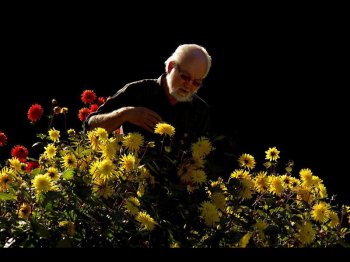
Plant Breeding in NZ – Experience & Viewpoints from Dr Keith Hammett
Editor: Chris Smellie, NZFGA
The NZFGA May newsletter had an article about ‘New Varieties’, outlining the constraints around the importation of new Germplasm. It also incorporated some comments about plant breeding in NZ. I quoted Dr Keith Hammett, probably the premier ornamental - plant breeder in NZ, who at one stage believed that – “NZ had the potential to become the Holland of the Pacific for ornamental horticulture” and that it was a missed opportunity for NZ.
Since then I have had further discussions with Dr Hammett about plant breeding in NZ.
Prior to becoming an independent plant breeder Dr Hammett, spurred by the success of Kiwi fruit [Actinidia chinensis] in the 1980’s, set out on the process of developing a new fruit crop. Pepino [Solanum muricatum] was identified as having the potential for transformation into an internationally viable fruit crop. Over a period of 25 years a good Pepino gene pool had been assembled but factors such as low yields, off-flavours and easily bruised fruit needed to be overcome. Dr Hammett assembled a team around him from the University of Auckland to overcome the problems and considerable progress was made in developing a line of bruise resistant fruit and a line with reliably acceptable flavour. At the time Dr Hammett was about to bring these two lines together the ‘Crown Research Institute act 1992’ [CRI] was introduced by the then Minister for ‘Science Research & Technology’ – Simon Upton. The ‘CRI’s were formed out of the ‘Department of Scientific & Industrial Research’ [DSIR] and it was required that they become “financially viable” and operate on commercial lines. This caused vexation among many scientists, all work on new crops ceased and a number of valuable gene pools assembled at considerable cost over many years were lost.
Today, Dr Hammett believes it would be particularly difficult for anybody to breed new ornamental varieties without a team approach. He points to the success of the Dutch breeders – ‘while they are individual companies they work in harmony as a nation when it comes to breeding and their government, which fully appreciates the national importance of horticulture, puts money into supporting breeding programmes.
Maintaining a collection of plants to breed from is an expensive business says Dr Hammett and a collaborative approach is needed amongst small breeders. In the case of the Nursery industry a number of companies are big enough to pursue their own breeding objectives. Frank Schuurman did breed for the flower industry but initially this was a passion of his own, eventually he achieved global sales of a number of rose varieties.
Dr Hammett maintains that the environment for plant breeding in NZ was also stymied when legislation for the introduction of plant material was lumped in with the ‘Hazardous Substances’ legislation of 1997 along with ‘dangerous goods’. He says that we would not even get a Chinese Gooseberry – as the initial kiwi fruit plants were known – into NZ today.
Dr Hammett is willing to pass on his experience in plant breeding to anyone interested in plant breeding; a good place to start would be a visit to his website – www.drkeithhammett.co.nz



 Classifieds
Classifieds



